This dynamic pagoda art project for middle school students is a great curriculum connection to the ancient cultures of Asia! This project covers Common Core Standards for History for grades 6-7 which can be found at the end of the lesson.
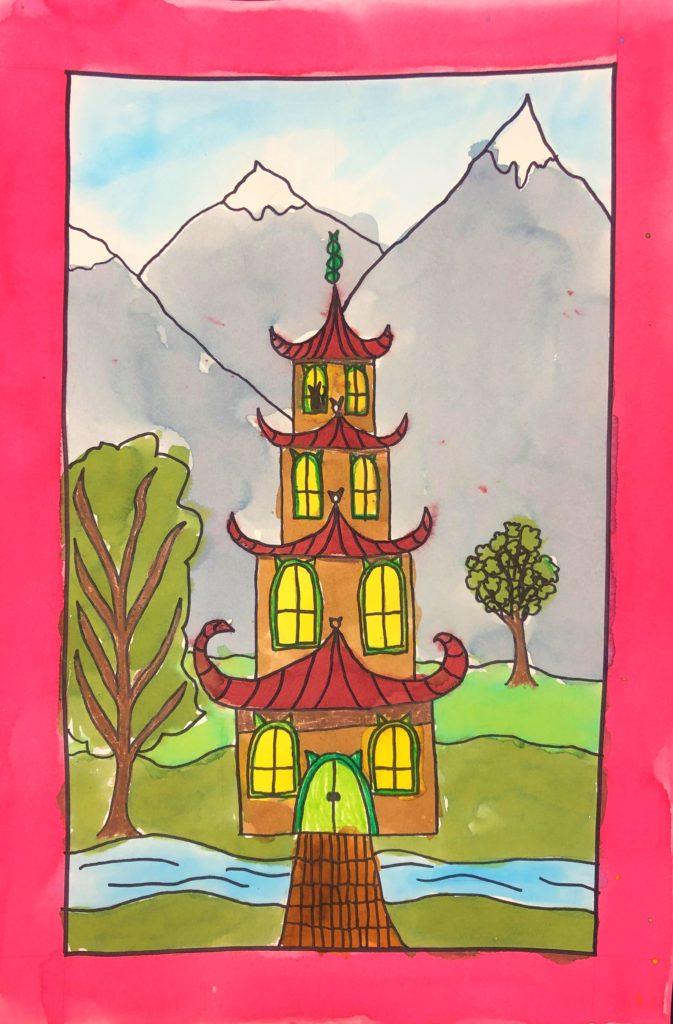
Grade Level
5th, 6th, 7th and 8th Grades
Objective
In this Ancient Pagoda Art lesson, students will connect their study of ancient cultures to designing an Asian Pagoda.
Time
3 – 60 min lessons
Materials
- Pencils
- Ruler
- Crayons
- 12×18 Watercolor paper – Canson XL Series Watercolor Textured Paper Pad for Paint, Pencil, Ink, Charcoal, Pastel, and Acrylic, Fold Over, 140 Pound, 12 x 18 Inch, 30 Sheets
- Brushes – Acrylic Paint Brush Set, 1 Packs / 10 pcs Nylon Hair Brushes for All Purpose Oil Watercolor Painting Artist Professional Kits
- Liquid Water Colors – Sargent Art 22-6010 10-Count 8-Ounce Watercolor Magic Set
- Or this mini version for homeschooling – Sargent Art 22-6210 10-Count 4-Ounce Watercolor Magic
- Kleenex for blotting paint
- Sharpie Marker – Sharpie Permanent Marker, Fine Point, Black, Pack of 5
Inspiration/Artist
I was inspired to make this project after I saw this idea: Click Here
Instruction with Questions
Day 1
Students watch videos about Architecture and Famous Buildings around the World. These can all be found on Youtube:
I am an Architect – The History of Architecture: Click Here
How to Become an Architect? CareerBuilder Videos from funza Academy.: Click Here
10 Strangest Buildings In The World: Click Here
Famous buildings in the world – famous structures of the world: Click Here
How High Can Skyscrapers Go? – Cheddar Explores: Click Here
Day 2
Students watch a few more videos focused more specifically on Pagodas.
Art with Mati and Dada – Horiu-Ji Temple | Kids Animated Short Stories in English: Click Here
Pagodas: The Ancient Burmese Status Symbols: Click Here
Secret of the Pagoda’s Earthquake Resistant Design: Click Here
Draw a Pagoda: Click Here
The next presentation I found online. It is not one that I created and I found that it has many grammatical errors. However, it is a great resource for you, the teacher to watch. Then, you can share the information with your class and they will think you are a genius!
PREZI on Pagodas vs. Cathedrals: Click Here
Students practice drawing a pagoda.
While they are drawing, pull students aside and have them create their border for their final picture. The frame should be one inch thick around the edges of the paper.
Day 3
Students review what they have learned about Pagodas and connect it to Elements of Art:
- Balance (symmetry)
- Line (vertical, horizontal, curves)
- Color (importance of red)
- Texture (dragons)
- Shape and form (overall shape of pagoda and tiers) – use of a ruler to achieve straight, horizontal and vertical lines
- Perspective – the bridge should have horizontal lines. If there are poles on the sides of the bridge, they should be vertical – Pathways should be wider closer to bottom of the page, and become more narrow as they connect to the door.
Remind them to create balance and include:
- Structure appears made of wood
- Curved rooftops
- Structure is 3-9 stories high around a central structure
- Include a steeple, a pond, mountains, tree(s), dragon (scales/face/full dragon)
- Mountains should continue through the pagoda’s background and not stop suddenly
- The ground where the pagoda sits should be in a separate colored area than the mountains.
- Cherry Trees are encouraged
- Crayon is used for smaller areas. Watercolor is used on larger areas
After the students pencil in their drawing, they outline all of it with Sharpie Markers.
Here are some finished Ancient Pagoda Art pieces!

Common Core Standards
6th Grade – History
6.6 Students analyze the geographic, political, economic, religious, and social structures of the early civilizations of China.
1. Locate and describe the origins of Chinese civilization in the Huang-He Valley during the Shang Dynasty.
7th Grade – History
7.3 Students analyze the geographic, political, economic, religious, and social structures of the civilizations of China in the Middle Ages.
4. Understand the importance of both overland trade and maritime expeditions between China and other civilizations in the Mongol Ascendancy and Ming Dynasty.
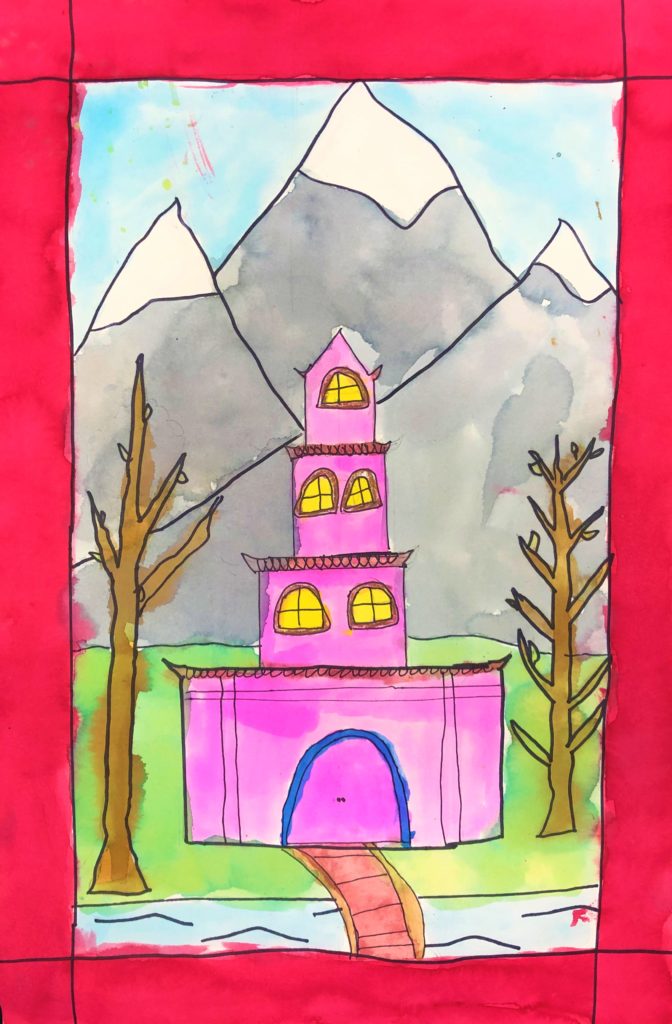
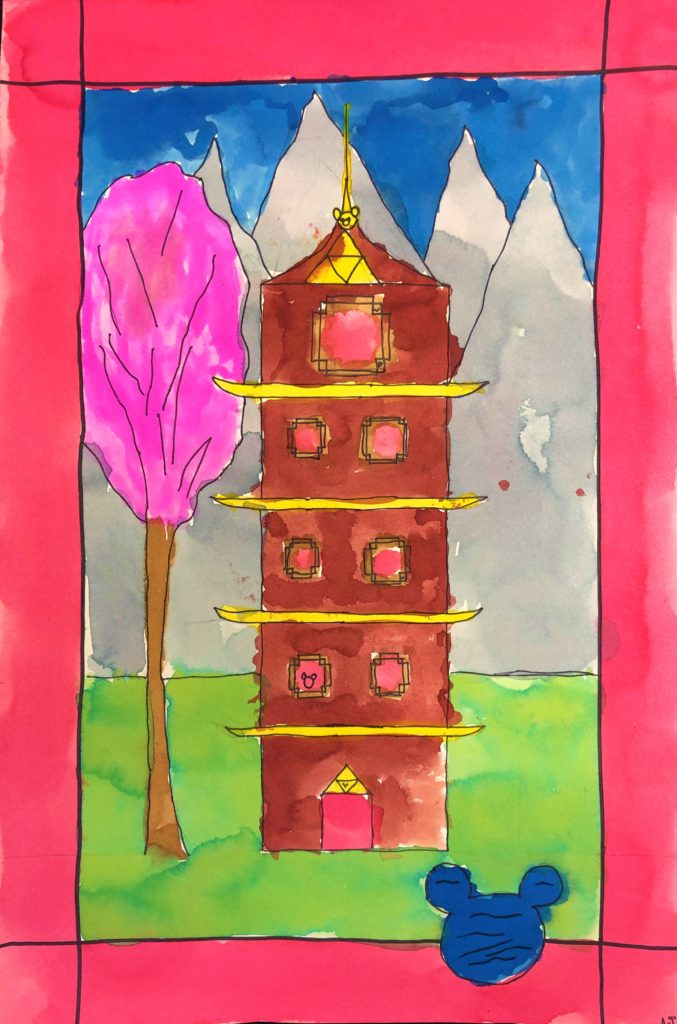
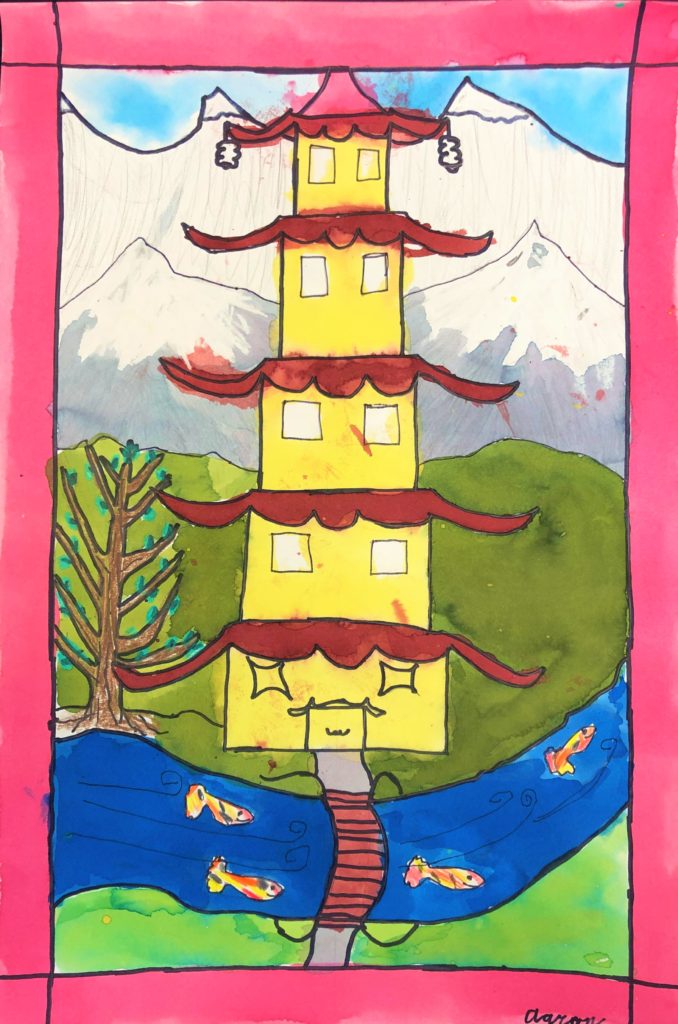

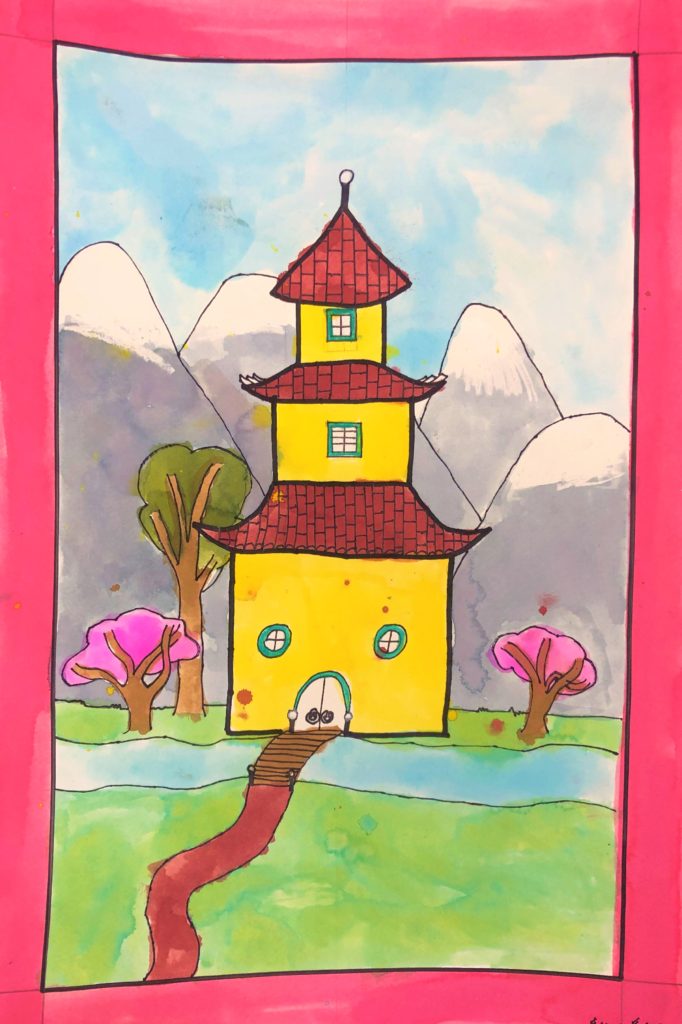


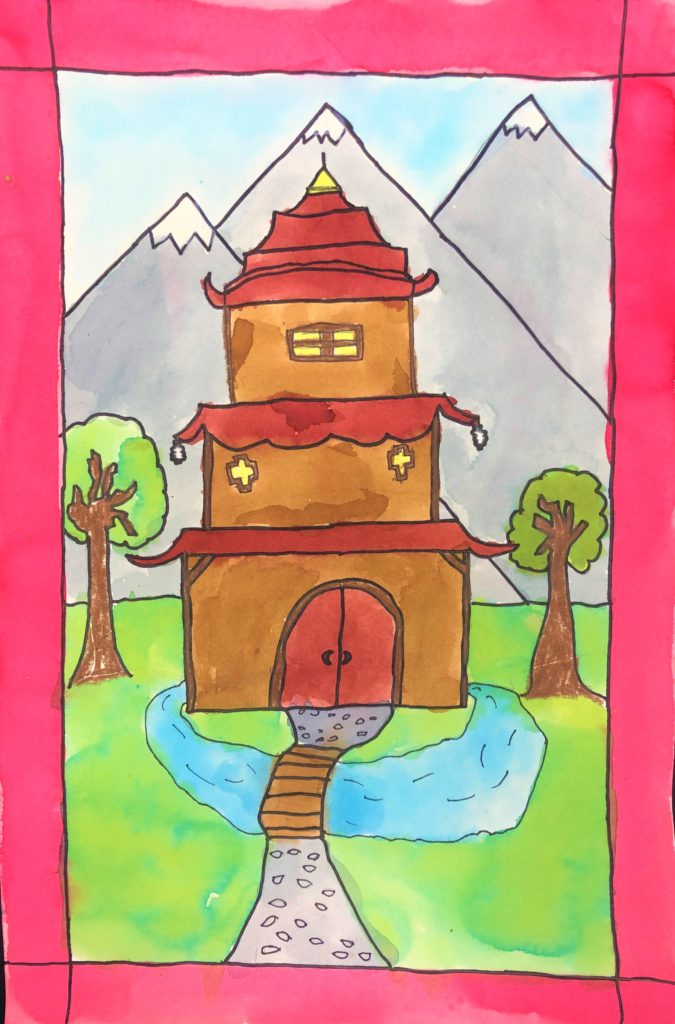


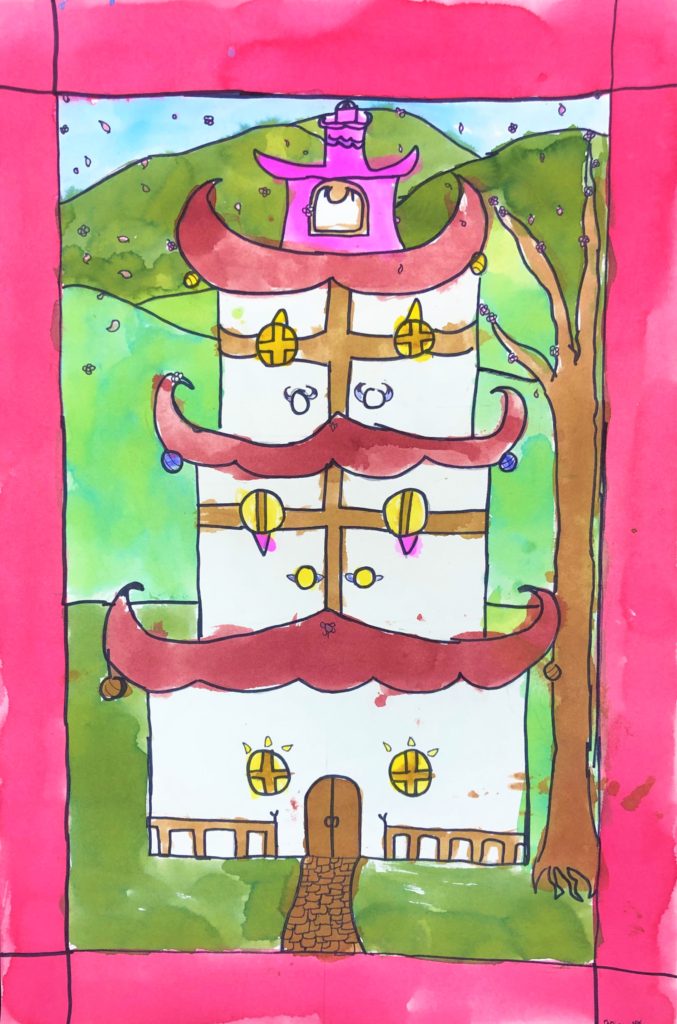

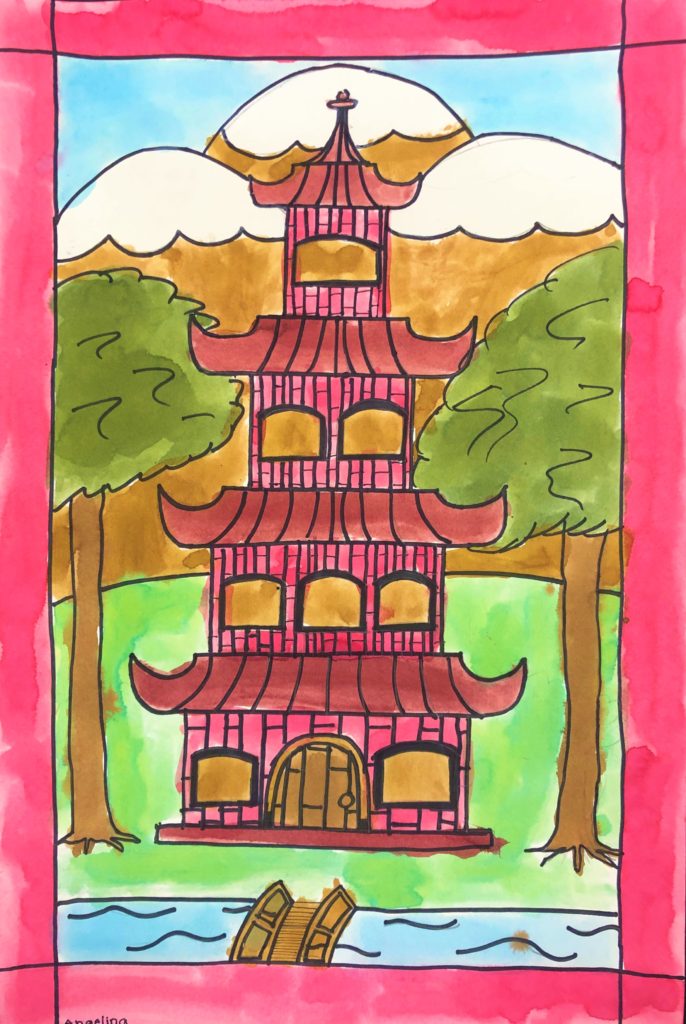


super supper litty